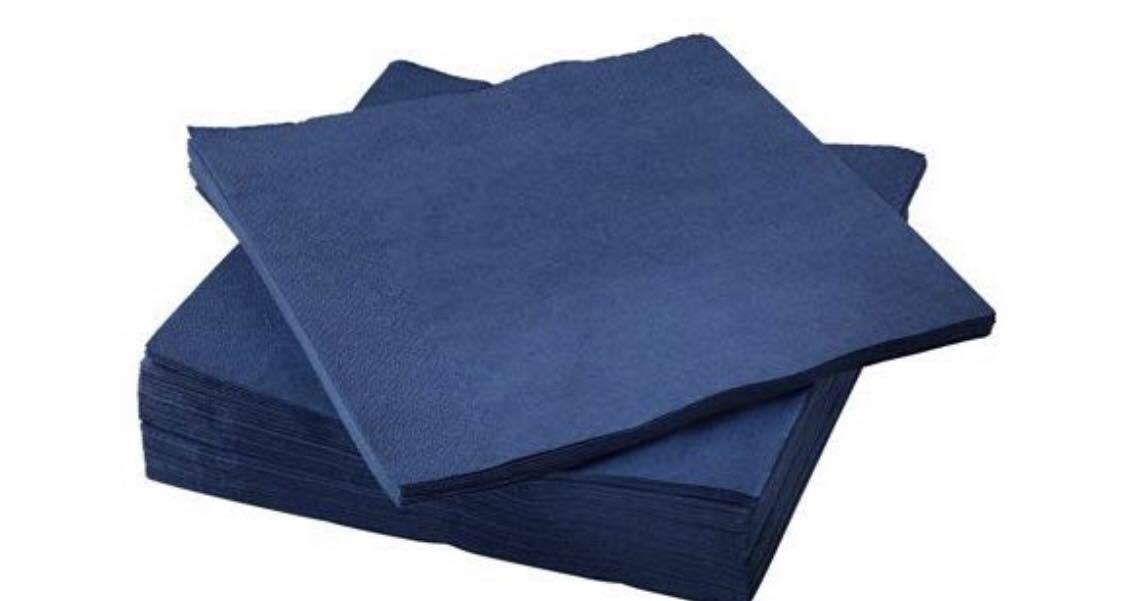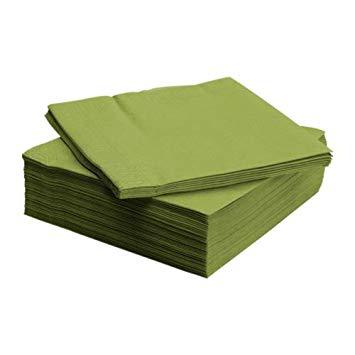Papers tissue notes
Tissue paper has become an indispensable hygiene and cleaning product for many people, but the variety and colorful packaging often confuse consumers. Experts warn that to purchase hygiene and clean tissue paper products, one still needs to master four 'tricks'.
Firstly, one should choose products from large enterprises and well-known brands. These products have been subjected to multiple national supervision and spot checks, demonstrating stable and reliable quality. At the same time, these enterprises' production equipment is advanced, and the production process management is strict, using high-quality raw materials. Although the price may be relatively expensive, using them ensures hygiene and comfort, and one can feel reassured.
Secondly, look at the packaging. The product packaging should indicate the name, address, and phone number of the manufacturing enterprise. Also, pay attention to whether the packaging indicates the product's name and the standards it follows, the product's grade, production date, and expiration date. It's best to buy the latest products.
The best choice is to use pure wood pulp for production. Currently, the raw materials for tissue paper production are complex, including cotton pulp, wood pulp, grass pulp, waste paper edges, and waste paper. Products made from waste paper edges and waste paper generally have medium to low quality, low strength, easy to shed hair and powder, and some may disintegrate when exposed to water. In summer, when used to wipe sweat, the paper lint is easily stuck to the face.
Fourthly, it is not necessarily better for tissue paper to be whiter. Some producers add excess fluorescent whitening agents to increase the product's whiteness, resulting in tissue paper with a whiteness exceeding the prescribed A-grade standard of 90.0 percent. This makes the product appear unnatural and the color tone is not soft.
Colorful napkins
At present, a type of colored napkins has begun to appear in the domestic market, which can be roughly summarized into three categories.
One-color or two-color logo
Print your store's logo on a white napkin to serve as a certain degree of publicity.
Second, stained napkins
Table napkins are directly dyed in various colors during the production process, and both sides are uniform in color.
Section Three: Full-Color Printing
It's the napkins printed with various patterns on white tissue paper. Colorful napkins are the sublimation of white napkins, bringing the use of tissue paper into a colorful world. This type of tissue paper is more popular abroad, used at events such as holidays, birthdays, parties, family gatherings, etc., mainly to match and enhance the atmosphere, thereby creating a warm, romantic and enthusiastic atmosphere.
Due to the impact of the financial storm in the international market, many export enterprises of colored napkins have shifted their focus to the domestic market. Meanwhile, new media emerging in China have also used napkins as their carrier, among which Beijing Yizhi Fengxing Media's development of colored napkins and advertising tissues themed on Chinese weddings has received high praise from users.
The requirements, processes, and procedures for printing colored napkins
Due to the fact that flexible plate printing belongs to ink-based printing, it is very easy to cause paper swelling when it comes into contact with water or large amounts of ink. This can lead to unevenness in the local area after printing, which in turn affects the next printing step, and can also cause wrinkles. At the same time, the material that is prone to swelling exacerbates the fluctuation of tension, leading to larger fluctuations in registration accuracy, making it difficult to produce good products. Furthermore, due to the poor moisture resistance of toilet paper, it is easy to transfer loose fibers from the paper to the plate after contact with the plate, causing fuzzing of the plate, making it impossible to continue with the printing process, which further affects the quality and yield of the finished product. In addition, ordinary facial tissues are made by laminating two or three layers of non-creased toilet paper with a joint, then going through flexible plate printing, and then through tooth-shaped rollers.
The simple combination of paper foil roller pressing flowers, most of the napkins in China belong to this. Nowadays, most napkins on the table in Europe and the United States are micro-coated composite materials before printing. Such napkins are flat, smooth, and have a texture and sense of thickness, and there is a special product, that is, micro-coated composite products. The printing layer is in the middle of the three-layer structure, so it has a good sense of texture and flexibility, and the product surface is more beautiful.
Domestic printers should strive to change the method of pressing and compressing the napkins to a micro-coating composite before printing, so as to achieve a qualitative leap in the quality of napkins. In addition, domestic napkins should also make improvements in materials to narrow the gap with foreign products. For example, using higher purity wood pulp to produce the original paper, adding enough moisture-resistant agents, and striving to meet the printing requirements in terms of surface smoothness and moisture resistance strength, etc.
The requirements for ink
Since napkins are closely related to people's lives and involve the service industry, it is required that the ink used be safe and non-toxic, have strong adhesion, and not bleed color.
Table napkin printing initially used oily inks, which have good machine adaptability but produce a strong odor. Some napkin printers using relief printing technology have tried using ethylene glycol inks (washable) to eliminate the odor, but this process has encountered challenges such as ink bleed-through (liquid spreading or penetrating into the paper) when the ethylene glycol is present; in addition, the machine adaptability of this ink is not ideal.
1. Main Advantages
As ink technology continues to advance, tissue printing companies are shifting to more suitable flexible plate printing water-based inks.
Ink, I have felt the advantages of pigment-based ink over dye-based ink. In this context, flexographic printing technology has made its way onto the stage of napkin printing, with its main advantages as follows.
(1)The odor is smaller, and it has good chemical resistance and wear resistance.
(2)Reduced ink blurring on paper. Sometimes, after drinking, the ink on the napkin will stain the white tablecloths or clothes, which will lead to consumer complaints. The components of the water-based ink in flexographic printing contain hardening resins and waxes that dry, and the use of pigments instead of dyes reduces ink blurring to a minimum.
Eco-friendly: Since the waste ink (such as water-based ink and solvent-based ink) can recover the pigment, water-based flexographic inks are more eco-friendly. Because they do not produce VOCs, water-based flexographic inks meet the requirement of reducing
Environmental requirements for VOC emissions.
(4)Increasing corporate profits: Reducing price pressure and ink inventory is very beneficial to the operation of the company.
2. Points for Attention
If you are considering entering the napkin printing market, the most crucial thing is to understand inks and the relationship between inks and the napkin printing products. It is important to understand that the color of napkin printing has limitations, regardless of the type of material surface. Therefore, when choosing inks, it is particularly important to pay attention to the following points.
(1)Have common sense about pigments. For example, one should know which pigments are not suitable for printing on napkins, such as
Rose red, methylene blue, basic blue, and red C precipitated pigments, because these pigments react with certain compounds, such as water and
After contact with ethanol, etc., it will affect the oil-based ink's resistance.
(2)There are two types of ink that paper napkin printing enterprises can choose from: one is ready-made ink, and the other is
Concentrated ink. Finished inks can only be printed on a limited number of printing materials, while concentrated inks can be printed on a variety of materials.
Printing on a variety of adhesive materials, but some additives are required. Concentrated inks are very convenient to use and can be applied to many.
Placing the screen on the printing press and the embossing roll is very important, as a batch of work often requires the use of different machines.
(3) To avoid the problem of poor resistance after printing, one should understand the terminal application of napkins.
During the process, what substances will be encountered must be considered. The napkin printing ink must have a very high alkaline resistance, and at the same time,
It should also be resistant to substances such as milk, water, and ethanol. The detection methods established by the company should be reproducible.
To eliminate the impact of subjective factors on the results of the test by the operator.
(4)To consider the safety of napkins in contact with skin and eyes during use, and it is necessary to be familiar with some
Terms such as occasional food contact, indirect food contact, and direct food contact, correctly choose to pass the direct food contact
Certified ink. When the printer fully considers the above factors, it will limit the selection of color for napkin printing ink.
选择,尤其是很多色彩鲜艳的颜色无法在餐巾纸上复制出来,同时这些局限性也提高了
The cost of ink.
Our company takes the international market as the guide and the domestic market as the foundation, committed to improving the quality of life, and specializes in the operation of 1-6 color printed napkins, tablecloths, foreign trade tissue paper, party living supplies and other high-middle grade living supplies.


 color mixing
color mixing









